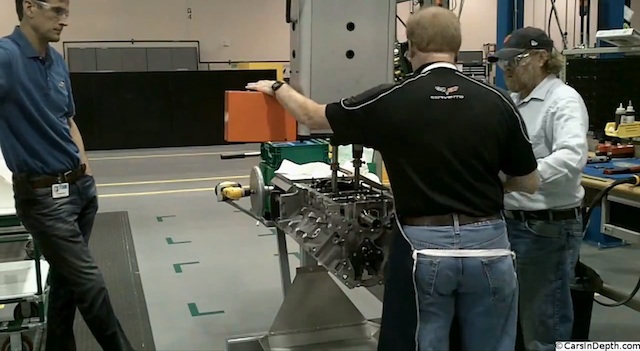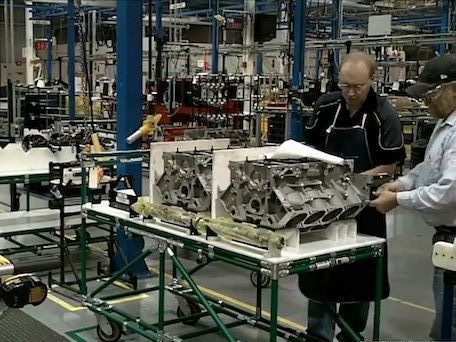Last November, the GM Performance Build Center of Wixom, Michigan reached a milestone by completing the construction of the company’s 100-millionth assembled small-block [1], in this instance a supercharged LS9 that was built for display purposes only.
When we covered this story at the beginning of this year, we discussed how the LS series as a whole was unique in that it used several electronic components that were never usually found on a conventional small-block, though few other changes have been implemented since the original 265 cubic inch motor’s introduction in 1955.
There have, however been changes in engine architecture since that time, and as discussed previously, the LS9 is to the General what an AMG motor is to Mercedes; each individual unit is assembled by an assigned engineer in an environment that is specific to the motor assembly process. [2]
[2]
It’s no wonder then that GM’s supercharged LS9 is featured in Chevy’s most top-shelf, flagship sports car, the $110k+ ZR1 Vette. The ZR1’s hefty price tag is a massive one to pay, for sure, but the price is not too great when considering the level of care that goes into the construction of the Corvette’s powertrain.
Not many of us get to see this process; unfortunately, and usually you’d have to pay out of pocket to be in the Performance Build Center during the LS mill’s precise conception. That is until now.
Obviously the entire build process could not be encapsulated within the brief space of this article, but for this reason our featured video captures everything, from top to bottom, in less than three minutes. As you’ll see, everything from the motor’s bottom end to its head and valvetrain are assembled in precise fashion.
Again, if you are lucky enough to be a ZR1 purchaser then you do have the option to travel to Wixom to build your very own LS9 mill. Sadly, that only applies to a very few of us, so it’s safe to assume that for most of us this time-lapsed assembly video is as close as we’ll get!
